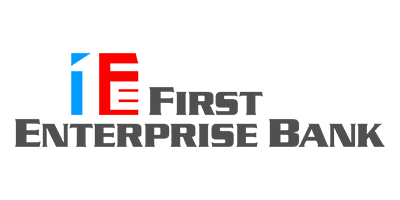Business Challenge
First Enterprise Bank is an independent and locally-owned four-branch community bank in Oklahoma City, Oklahoma, USA. Since its founding in 1907, the bank’s mission has been one of serving the community by providing exceptional customer service.
IT Director, Chris Hood, joined First Enterprise Bank in 2009. He inherited an outdated, legacy network with too many servers dedicated to operating individual functions, and traditional, tape-based backup that was too slow and did not offer redundancy. Hood conducted server upgrades and added virtualization with VMware initially, but needed to address disaster recovery (DR) objectives. Oklahoma is notorious for both tornado and earthquake threats, and Hood had to ensure his data was safe and business impact would be minimized in the case of a natural disaster. Financial institutions typically manage highly sensitive information that cannot afford to be lost, and are required to conduct regular DR tests and report results to regulators, as a routine practice to prepare for such events.
Their previous DR solution was based on StarWind software which presented iSCSI storage and was able to replicate between two sites, but it did not support VMware vMotion, required separate servers and only replicated one way. The previous DR solution also required a five-page procedure on the manual steps required to get the bank up and running after an outage. First Enterprise Bank needed an affordable, hyperconverged solution that could run all of the bank’s back-office applications, ensure high availability and simplify the DR plan.
Solution
First Enterprise Bank implemented a dual-way stretch cluster across two sites that includes two StorMagic SvSAN servers at each location. At each site, one server is replicating to the other site and the second server is in place as a hot-spare server, in case the production server fails. The StorMagic-based hyperconverged solution runs all the back-office applications for all four branches and delivers the simplified DR that is required. If a site ever goes down, all of the affected virtual machines will automatically be restarted at the surviving site with the help of VMware vMotion, with no downtime or human intervention required.
Because SvSAN is so simple to administer and has automated failover, significantly fewer steps are needed for the DR plan, First Enterprise Bank has been able to condense the five page procedure down to two pages with very little human intervention required.
Why StorMagic
First Enterprise Bank chose StorMagic SvSAN for several reasons, including:
- Low Cost — vSAN was 87% more expensive to implement, and required 1Gb network links between sites versus 300Mb for StorMagic
- Less equipment required — First Enterprise Bank was able to preserve and repurpose four existing servers when they implemented StorMagic SvSAN, which made the technology refresh simpler and less disruptive. The VMware solution would have required six new ones.
- Disaster Recovery — The bank now has a simple DR plan with automated failover instead of a five page manual detailing the steps that people need to take if there was ever an outage. Their DR goals are met and they meet federal requirements easily with SvSAN.
Technical Configuration
Server Configuration (Per Server)
| SvSAN License | SvSAN 6TB Platinum |
| Hardware | Cisco |
| CPU | 2 sockets, 6 cores per CPU |
| Memory | 128GB per server |
| Storage | 5TB, 8x 2.5” 10K drives |
| Networking | 2 NICs, 300Mbit between sites |
| Hypervisor | VMware vSphere 6.0 Essentials Plus |
| Applications | All back-office applications: email, active directory, database |
| Data Protection | Veeam |
Simple
Provides a true ‘set and forget’ solution for any environment using centralized deployment and management – whether for thousands of sites or just one.
Cost-Effective
Eliminates physical SANs by converging compute and storage into a lightweight commodity server footprint thereby dramatically lowering costs.
Flexible
Delivers on today’s performance needs leveraging any CPU and storage type whilst avoiding over-provisioning with the confidence of scaling for tomorrow’s demands.
Download a PDF copy of this case study to keep and share:

